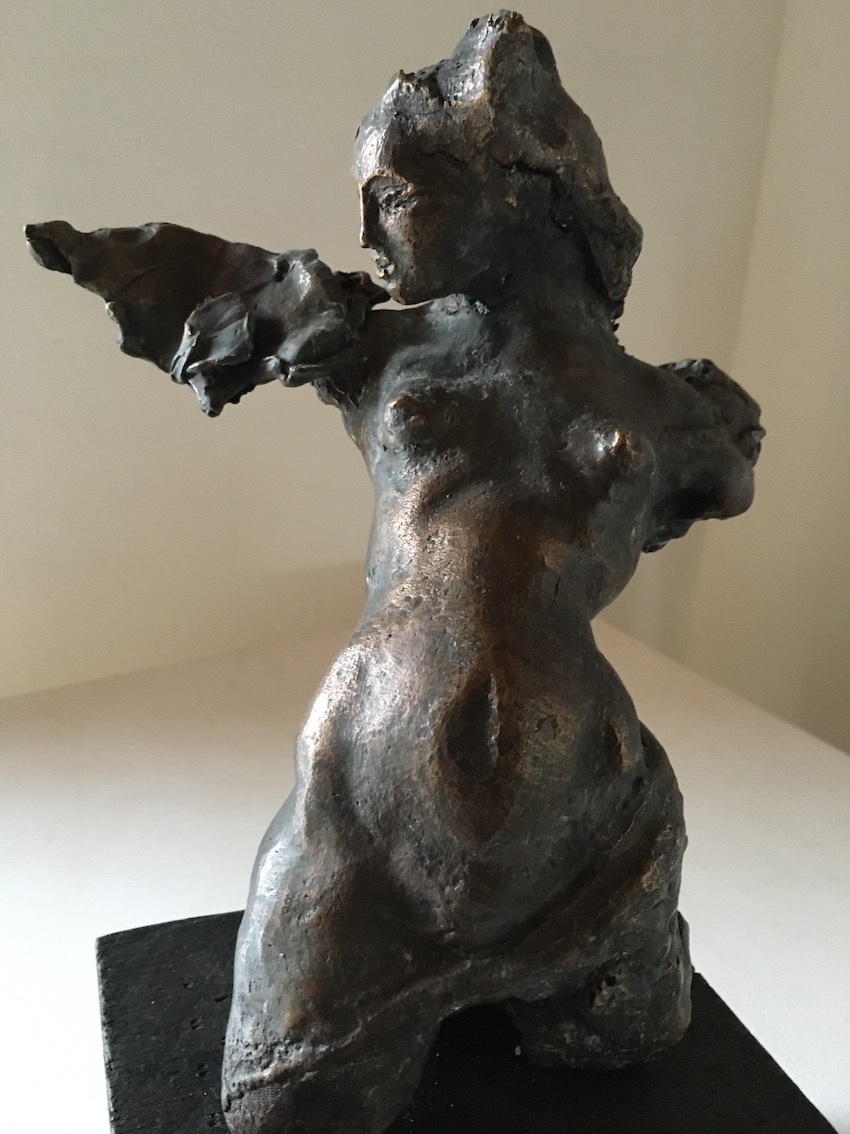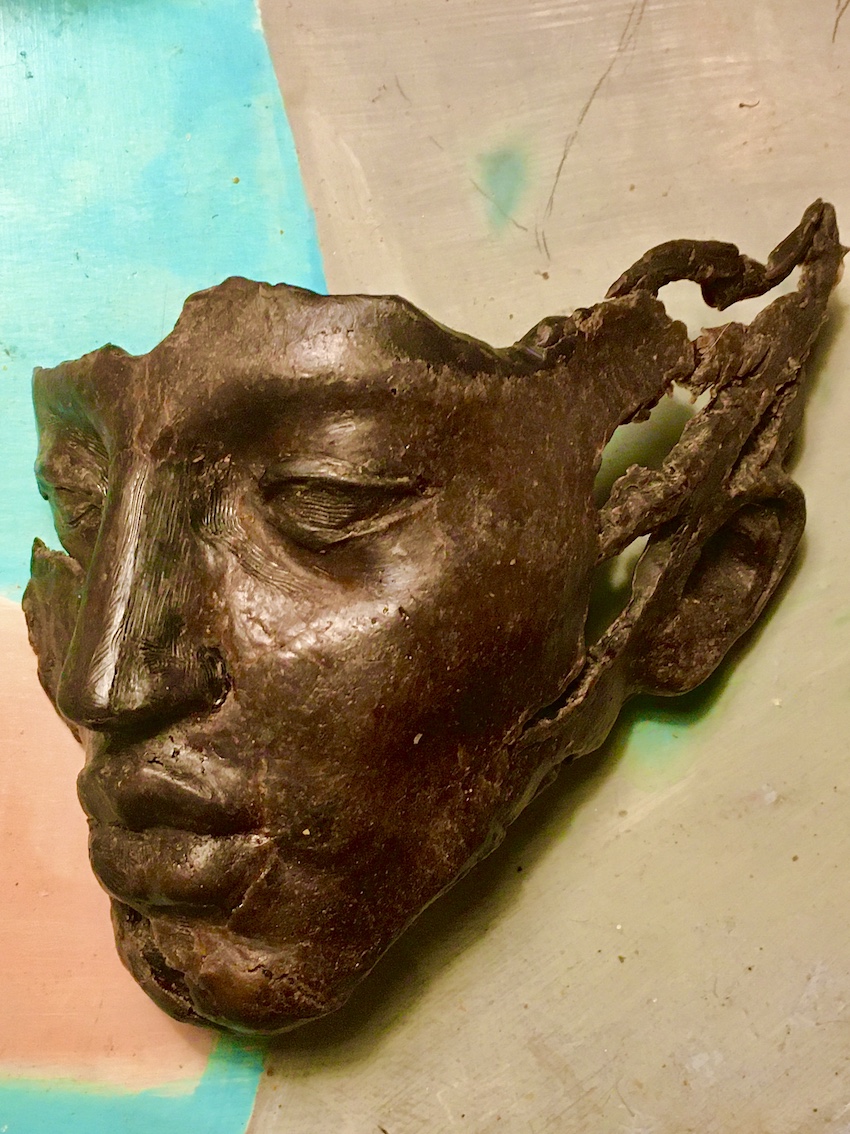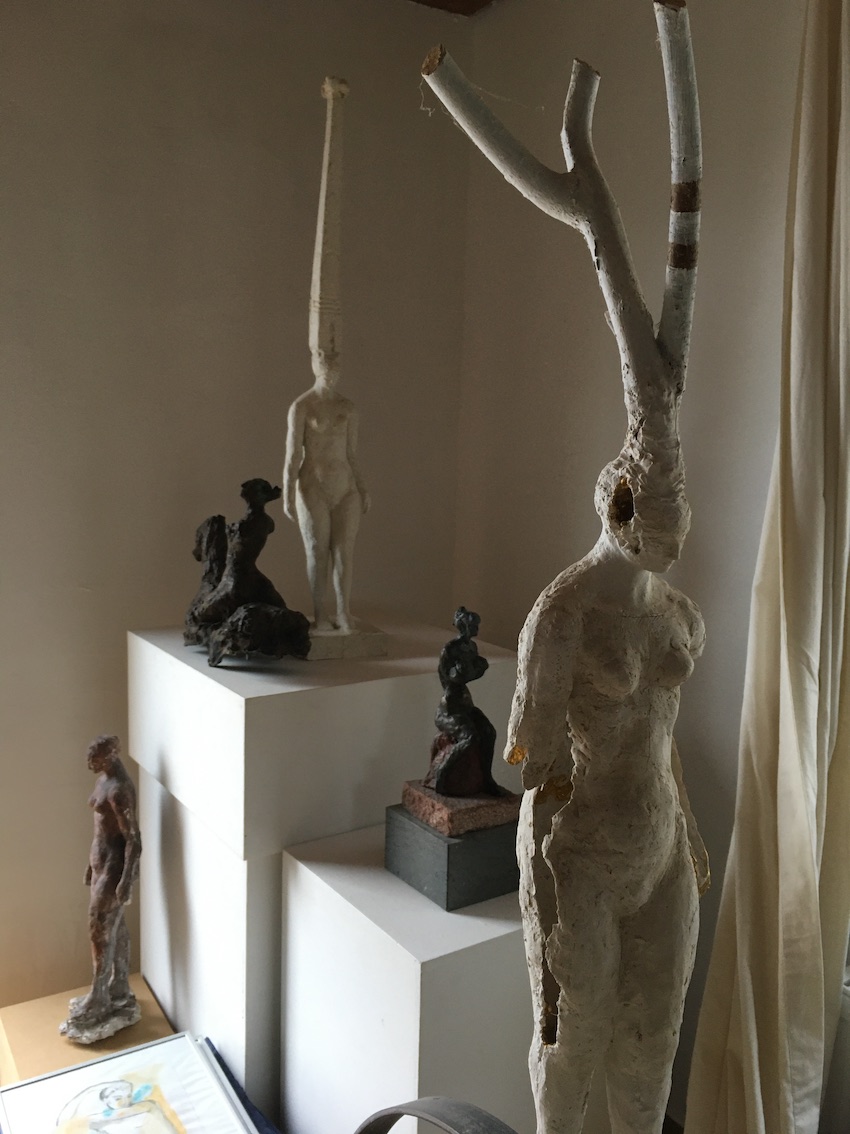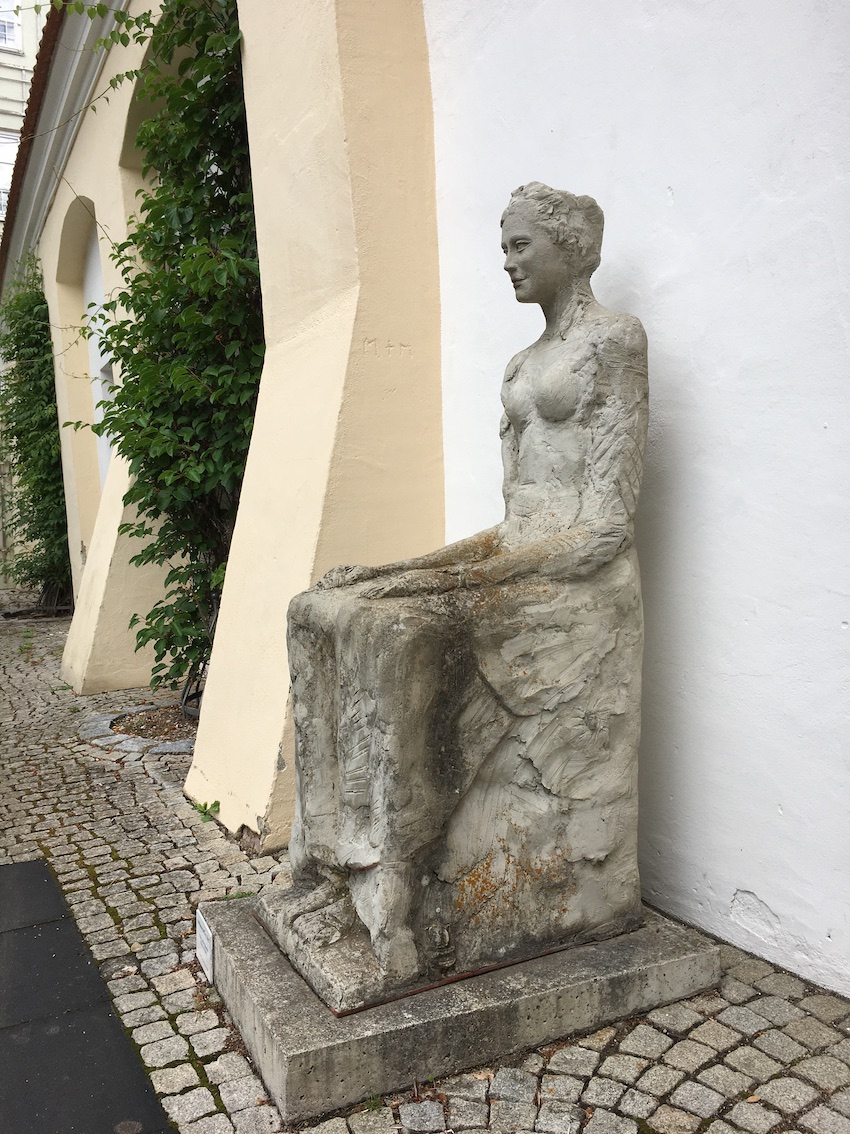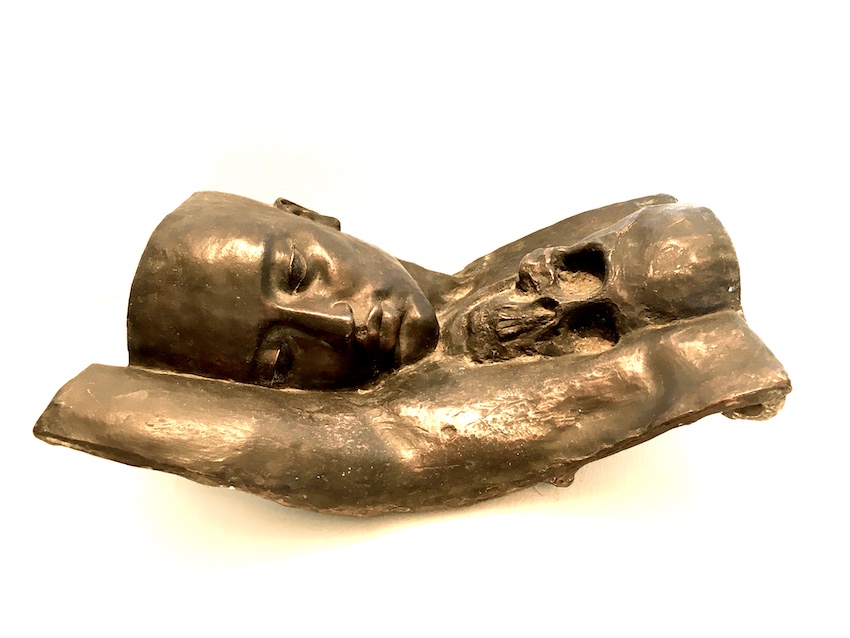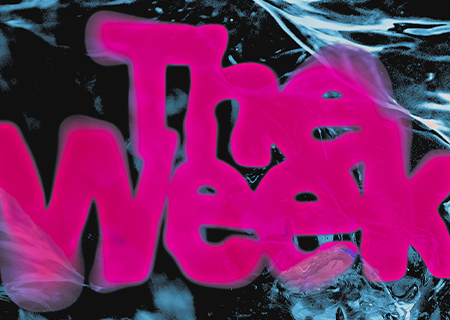Petra Wende: “Places of dreaming, of beauty and tenderness, but also of dissonance and fractions”
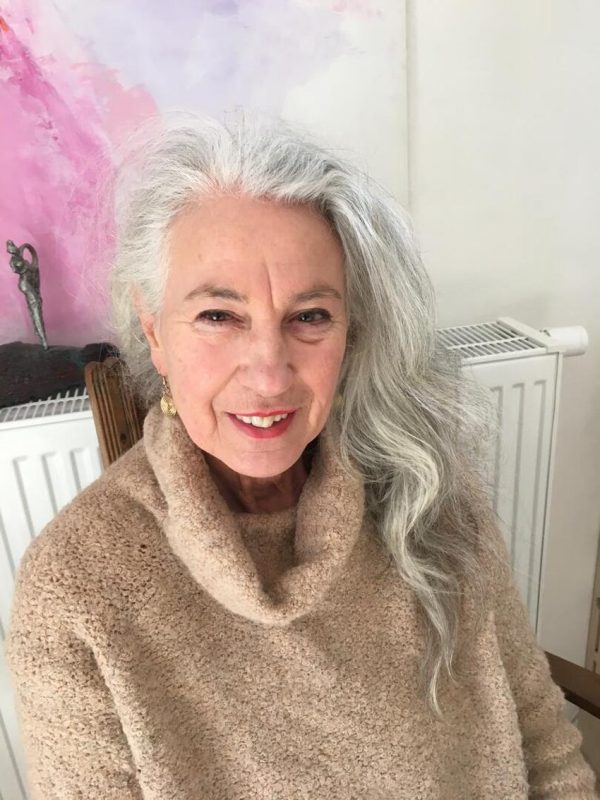
I met Petra Wende in the late 80’s. To be precise, in the legendary “Ex n Pop” Club, the successor to the even more renown Risko. Blixa Bargeld with Einstürzende Neubauten, Nick Cave with the Bad Seeds, Depeche Mode, die Haut and basically the entire staff of the film “Wings of Desire” by Wim Wenders could be found there on a daily basis. Petra was one of the stars of this scene, also known from the Dschungel, the Studio 54 of Berlin, where David Bowie and Iggy Pop cavorted. She was legendary for her beauty and wildness.
Roland Wolf, Nick Cave’s keyboard player, whispered to me at the time that she was a real Amazon; captivatingly strong, excessive, incredibly talented, and very intense. I think everyone was in love with her. I was a little scared of her at first, she seemed larger than life and was also quite a bit older than most of my acquaintances. In the mid-90s, long after she had left the nightlife to devote herself entirely to art, I had the pleasure of getting to know her better in connection with art exhibitions and came to appreciate her deeply.
Petra has an inner delicacy and sensitivity paired with tremendous power, which is wonderfully reflected in her sculptures. You can’t expect small talk from her because she is always completely honest, open, serious, and inquiring. Conversations with her go deep and always leave traces, just like her objects and drawings. It’s no coincidence that the critical minds of the 80s still respect and appreciate her to this day. Petra sculpts challenge, revelation, and scrutiny with a delicate sensibility and an outstanding sculptural skill mixed with a mystical, radiant elegance. Her objects have such a strong charisma that they seem to have an inner glow. Just like their creator.
Danielle De Picciotto: Petra, your work seems classic, but simultaneously something modern and timeless. What interests you about the techniques you use? What are you looking for in art?
Petra Wende: Even as a child, I enjoyed going to museums to see prehistoric, archaic things. The exhibited fragments touched me and gave me the impetus to think further, to dream. All this and the beauty of antiquity touches and delights me to this day. Fragments are elements in my art that appear again and again, that I connect to and that I vary.
Art offers me the opportunity to create what doesn’t exist on the outside. They are figurative works, places of dreaming, of beauty and tenderness, but also of dissonance and fractions that refer to the fragility of our existence and the inherent longing for transcendence. The aspect of grace, a taboo subject, is also important in my work. I use traditional materials that can sometimes be mixed in a peculiar way, such as bronze with iron, cement with felt, etc. That might be what you might think of as modern and timeless.
Every development of a character is a dialogue, it is the space where many things happen at the same time and yet only one character will stay there. The character tells stories that I have to merge with to be able to express it. This often means recognition of feelings and states that primarily have nothing to do with one’s own current state of mind but are triggered by the work that is supposed to be created there. In doing so, other aspects of existential questions such as what life is, what is love, what is passion, what is balance and stillness are presented again and again. For me, the execution must always be poetic, never gaudy and or inflexible, but revealing. It never ceases to amaze me how knowledge, questioning and accuracy and an almost physical intuition, can be manifested in the objects this expressively. It’s magical.
All my sculptural works are built with various materials and labor, and therefore are very physical, activities. Every material, every line has its expressiveness, demands different solutions, and thereby determines the content. It’s a lot of work, concrete action, of beating, sawing, bending, etc. I love making bronzes, the combination of creativity and craftsmanship, of softness and stability. Despite the importance of the patina and the chasing, the real creative process lies in the modelling, mostly I use clay for this, sometimes directly in wax. It is fascinating what your own finger pressure can do and how it shapes the sculpture. Touch, swipe, and caress, look and ponder for hours. Material and spiritual at the same time. If somebody else were to make the same figure, it would very likely look very different just by the way various hands would handle it.
I am very slow and precise. It takes time for me to be satisfied with a model. Every minimal movement changes everything. The intensity and stillness are wonderful.
I don’t feel compelled to create masses of sculptures.
Is there a central theme in your work or is each object independent of the other? Do you work on specific topics?
On the one hand, the objects are independent of one another, since I usually don’t work on one topic in succession, but rather concentrate entirely on one character and what it says. Nevertheless, there are always figures and images that can be assigned to a theme such as Arcadia, travelers, vanitas. They are probably archetypes or longings within me.
Many works are influenced by literature or myth. They are mostly animal people (I also wrote my diploma about that) and strong female characters in complex emotional moments like Europa, Salome, the Queen of Sheba, or my Penthesilea after Kleist. The horse already feels the drama of the eyes falling in love, as it begins to tear at the reign while she is still sitting proudly and erotically upright on him and yet her gaze is turned backwards. The depiction of momentous moments, the expression of inner feelings and tension, the personality of the respective sculpture, that’s what I want to encircle and peel out. This includes a close observation of internal and external movement. You can feel power through subtlety. There is a lot of tenderness, joy, liveliness and at the same time fragility, dissolution, and possible transformation. It is “that otherness” to the apparently obvious that fills the cracks and aims the gaze. You can see this as my basic theme, a kind of tender melancholy and the longing for wholeness, which is reflected again and again through the breaking open and the fragmentation. Ultimately, however, it is always about being alive and opening spiritual spaces. Something I believe affects all of us.
You make drawings and sculptures/objects. What is the difference for you in terms of content in the approach?
My phases of painting are separated from my sculpting phases. I also have reading or other phases in which I can neither make drawings nor sculptures. For me, the drawings and paintings are a counterpoint, also physically, to sculpting. I need both and both always present me with different challenges, which then result in a different form or content.
As already mentioned, for the sculptures, I need a lot of time for development and elaboration. After a long, almost meditative time, during which the work forms vaguely inside me and slowly develops through circling around it, I eventually have a fairly clear idea of what it should look like, so that I can then put it into practice. Nevertheless, I still complete or change things after years. Use parts in new combinations.
I approach drawings in two ways. On the one hand, with irrevocably clear, clean lines. This must go quickly and quietly without my hand jerking. The 2nd style is with my paintings and is done with generous movements, hatching and overlays. I use various materials from paper to ceramics and wood. The pictures are independent of the sculptural work, and I usually don’t make sketches for my figures. Also with the drawings I don’t want to produce much, rather reduce. In terms of content, they sometimes have a narrative moment, often there are color and spatial compositions. This is very liberating. The drawings and paintings are always spontaneous, out of the moment, layering and scratching as I go along, experimenting a lot. Some things only emerge when you do them. This alone creates a different content to that of the sculptures.
How did you come to your art? Did you study?
I’ve always designed and painted since I was a child. Three-dimensional thinking, the division of space came easily to me plus a certain sensitivity and concentration. As a child, village life was full of events, as a teenager it felt repressive, but I was lucky enough to spend most of my holidays with my godfather, the librarian and writer Andre Blavier, and his family, who knew avant-garde visual artists, musicians, and writers. Art, music, and literature gave me a vision of opportunities I was longing for. My internship in psychiatry and living in Berlin were unforgettable, specifically living with my boyfriend at the time, doing various jobs and, most importantly, my friendships in general. I now recognize the connections and important impacts more clearly. I guess that has to do with maturing. I can say that now that I am in my 70s. In addition to painting, there were also various things such as studying German and philosophy as well as working on experimental projects, e.g. Super8 films and videos and combining them with performance, making clothes from unusual materials, these were all preliminary stages to sculpture. Times of existential, unconventional expression, of wanting to “experience” oneself to feel life, etc., that could happen at home but at the same time there was the strenuous Berlin nightlife of the 80ies where one was seldom at home.
After working with groups, I realized that I can’t be creative with lots of people around, as much as I’ve learned from doing so. I still find it very enriching to work with individual people, I really enjoy working on exhibitions with my husband Matthias, who makes abstract wood and metal sculptures, or being in a bronze workshop with other equally focused people. I also appreciate and have great respect for group work in art and music.
For me personally it is most effective when I work alone and that seems to correspond to the medium of sculpture. This realization was the decisive reason to study sculpture in Italy at the Akademia Delle Belle Arte di Carrara. Life in Berlin no longer fulfilled me. I was drawn to the sun, so to speak, to finally integrate my classical side with the desire to learn a solid craft and work with marble, even if stone is the medium I least use now.
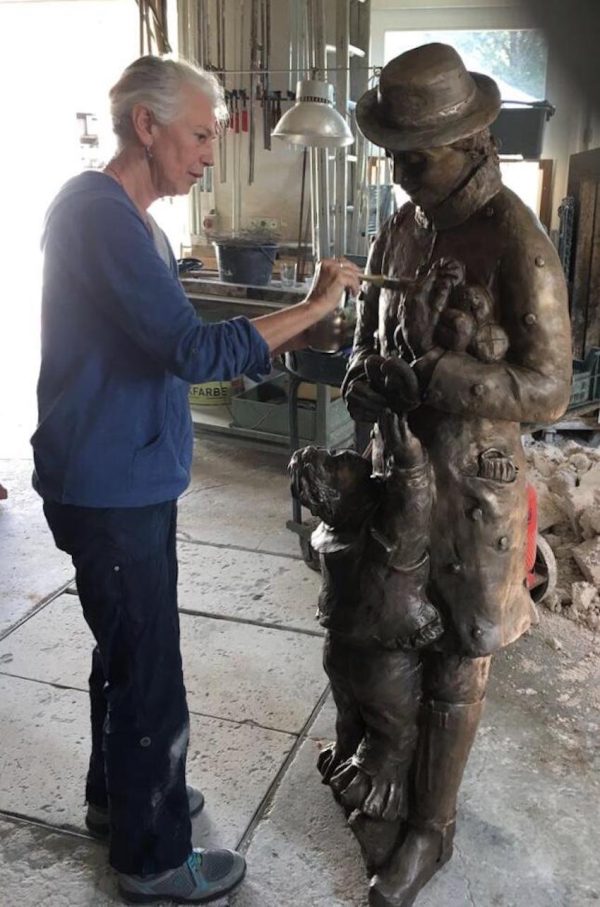 You lived in Berlin and now live in the countryside. How does your environment influence you? How does it influence your work?
You lived in Berlin and now live in the countryside. How does your environment influence you? How does it influence your work?
Yes, it was always an alternation of town and country, and the memories and impact are intertwined.
I was born in the city, grew up in the country, namely in Catholic Swabia in Bavaria, then again for a long time in the city, then in the country in Italy, then back in Berlin and now back in the country. Here, together with my husband, I cared for my father for four years and accompanied him until his death. He died in front of us, and we washed and oiled him.
This is an example of how the environment influences me. Through the experiences I have because of it, how I develop because of this as a human being. These experiences give my art a larger dimension, often in only subtle changes. But change is always there. It doesn’t help to get stuck in one manner.
When I moved back here to the village, I consciously worked in the baroque style, which is predominant here, for the first time, and this is how the series of my colored plaster figures came about. I look forward to looking out of the window every day, over the landscape with its many shapes and colors and the forest whose trees reach into our property. To feel the water of the lake all summer long. This may contribute to the sculptures becoming finer and more balanced. But my flower objects made of aluminum were created in Berlin.
And I really enjoy looking at the stars in the evenings…
But my little bronzes “Starcatcher” and “Stargazer” are meant more metaphorical.
At the same time there is the heaviness of the village and the loss of having a quick meal with artist friends in the evening or having a spontaneous coffee while exchanging music, books, or thoughts. The constant, possible cultural environment… you have to drive a while in the country to get anywhere or it stays digital. These are the moments I miss the city a lot. This personal, concrete loss is paired with a melancholic overarching of thoughts and becomes very creative, activated through curiosity and love of life. You learn to withdraw from nature and to feel and see this greatness. At the same time, I met wonderful people here in non-artistic areas and did a lot of other things and developed in ways that would not have been hip in Berlin. All of this flows subtly into my work.
Another new experience and influence: Here in the country I have also received commissions that deal with historical personalities, the writer Hedwig Lachmann or the first editor Therese Huber or the “Feeding of The Children”, a 1.80 m tall bronze. It was unusual to not draw from personal motivation, but to be given a specific theme. I used to hate commissions, but I’ve found that it takes just as much dedication and intensity. You learn a lot while researching, which then flows back into the work.
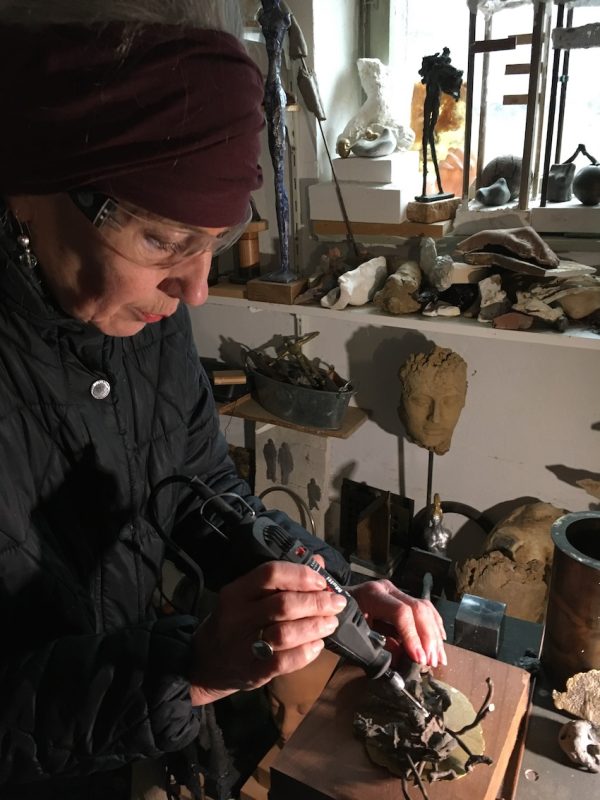 You have had a lot of contact with musicians in your life. Does music play a role in your work?
You have had a lot of contact with musicians in your life. Does music play a role in your work?
Music plays a big role in my life, it has always touched me, opened my eyes, and brought me a lot of joy. I’m very fortunate to have musician friends and access into this creative world. It’s so uplifting and wonderful. Nevertheless, I have not yet consciously dealt with any piece of music in my work. Most of the time I listen to music by intensely. I completely immerse in the music. I never listen to music during the initial phase of a work, only later maybe when I am doing simple manual labor. Very rarely do I find a piece that has the right mood to accompany me the whole time with an object.
But I have made drawings in collaboration with musicians. Last year drawings on various types of paper depicting fire and water for a musician to help him explain his composition. It is an inspiring extension to deal with requests that would not primarily arise as a topic within myself but then lead to fruitful work and cooperation. As already mentioned, the same applies to commissioned work.
What are you currently working on and what are your plans for 2023?
I do not enjoy speaking about my unfinished projects, because they are always in flux, and this is something magical that should only be mentioned when it is done. I guess I am superstitious. Nevertheless, I will be doing a few things I can mention:
First, tidying up the workshop and sorting it out needs to be done, a tedious task that I don’t really like doing. Then patinate unfinished bronzes and combine them with other materials, which is often quite complicated, for instance Arche Solaris. A bronze mask rising from iron nails. Tackling a large sculpture commission for a yoga studio. Drawing the sequence of the mukabele. Develop moon pictures for the composer and organist Hans Peter Schulz. In addition to creative artistic work, there is a whole lot else that fills my days, for instance bodywork, meditation and spinning dance. Then there is everyday life and the big house, almost completely renovated but still full of work and the 1200 sqm garden with greenhouse and vegetable beds.
Oh yes, and there seems to be a break from figurative to more abstract forms coming up, or even better yet , a more delicate and less focused aspect of the human figure, who knows.
Dear Danielle, it’s quite difficult to talk about myself and my work, I prefer speaking about cooking and heaven. But for that very reason, thank you very much for your questions and your attention.







